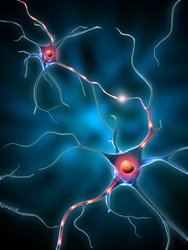Restoring neurons lost in Parkinson's
PD is one of the most common neurodegenerative disorders with a prevalence of approximately 1 % in the population over the age of 65. Loss of dopamine neurons in the substantia nigra area of the brain is one of the main pathological features of the disease. Despite having the potential for massive self-renewal, NSCs undergo limited cell division in vivo. It is unclear how stem cell pool size and cellular output in the adult brain is regulated. Stem cell research has the potential to significantly impact the development of disease-modifying treatments for PD. Researchers in the MOLPARK project will determine the conditions required for establishing and maintaining nigrostriatal dopaminergic neurons’ connections as a novel therapy for PD. MOLPARK scientists discovered that stem cell numbers in the adult brain can be manipulated through the histone H2AX regulatory pathway and PI3 kinase related kinase (PIKK) signalling pathway. The scientists have developed a new technique to identify protein complexes recruited by stem cells for replication along with newly formed chromatin. These proteins will contribute to the preservation of genomic integrity essential for the neurons to maintain their stem identity. The protein brain-expressed X-linked 1 (Bex1) has also been shown to influence NSCs. The MOLPARK team has developed Bex1 reagents and investigated the conditions necessary to promote stem cell proliferation. Conserved dopamine neurotrophic factor (CDNF) prevented degeneration of dopaminergic neurons in rodent models. Importantly, there were no signs of toxicity, inferring few side-effects during therapy. The team is planning clinical trials to assess the efficacy of CDNF in Parkinson's. A total of 36 publications in leading peer-reviewed journals, including PLOS and Cell is a reflection of the success of MOLPARK. Their research has made significant inroads in stem cell therapy for PD and will benefit the European pharma industry and PD patients.







